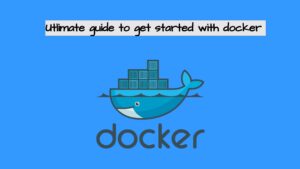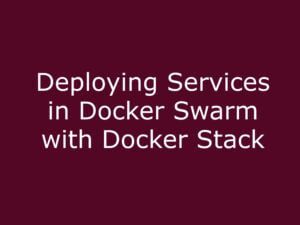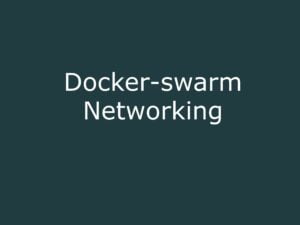Introduction: Docker has revolutionized the way software is developed, shipped, and deployed. In this blog post, we will explore the evolution of Docker, its advantages, disadvantages, competitors, and various use cases. Whether you’re a developer, IT professional, or simply curious about containerization technology, this article will provide you with a complete overview of Docker and its impact on the world of software development.
Evolution of docker
Docker container technology was launched in 2013 as an open-source Docker Engine.
It leveraged existing computing concepts around containers and specifically in the Linux world, primitives known as groups and namespaces. Docker’s technology is unique because it focuses on the requirements of developers and systems operators to separate application dependencies from infrastructure.
Success in the Linux world drove a partnership with Microsoft that brought Docker containers and their functionality to Windows Server.
The technology available from Docker and its open-source project, Moby has been leveraged by all major data centre vendors and cloud providers. Many of these providers are leveraging Docker for their container-native IaaS offerings. Additionally, the leading open-source serverless frameworks utilize Docker container technology.
Comparing Containers and Virtual Machines
Containers and virtual machines have similar resource isolation and allocation benefits but function differently because containers virtualize the operating system instead of the hardware. Containers are more portable and efficient.
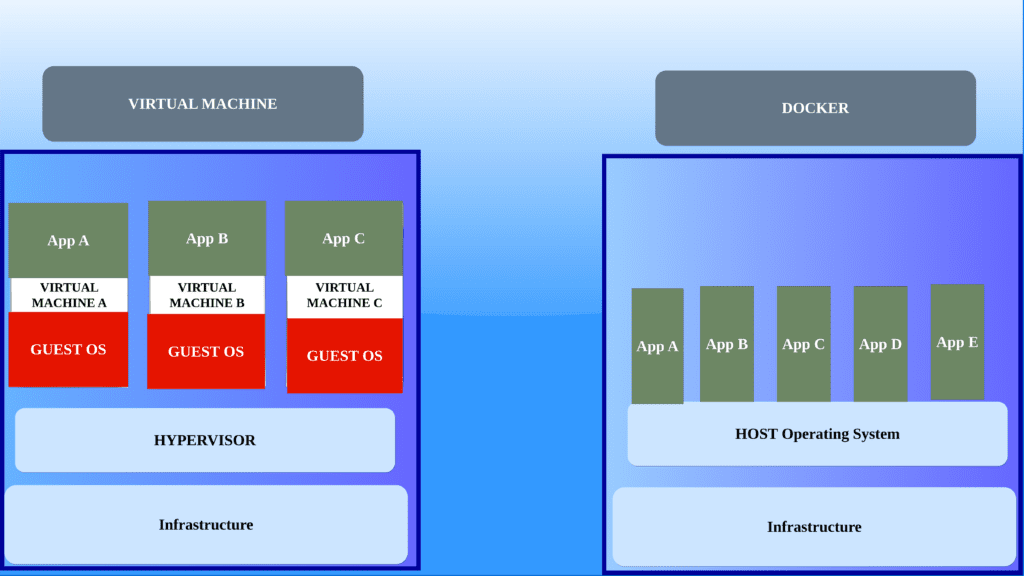
As shown in the above diagram is a high-level architecture of Virtual machines and docker.
Let’s dive into a practical scenario. Imagine you want to run a sample PHP application with an Nginx web server in an isolated namespace. Before the evolution of Docker, achieving this required provisioning a Virtual Machine (VM). The application would run in the VM but often encountered dependency issues due to potentially different PHP versions on the VM. Additionally, running another application, such as Apache Tomcat, on the same VM could lead to port conflicts and other dependency-related problems.
Fortunately, Docker resolves these challenges by providing a streamlined solution that isolates our applications from the host operating system.
With Docker, you can containerize your PHP app and Apache Tomcat separately, ensuring each run in its own isolated namespace. This means that any PHP or Tomcat-specific dependencies and configurations are encapsulated within their respective containers, eliminating conflicts with the host system and with each other.
| Virtual Machines (VMs) | Docker |
|---|---|
| Virtualization technology creates multiple instances of an OS on a single physical host. | Containerization platform that creates lightweight,portable containers for applications and their dependencies |
| Each VM operates independently with its own OS and virtual hardware. | Each container is isolated, running as a standalone |
| Utilizes a hypervisor to manage virtualization of resources and allow multiple VMs on one host. | unit for consistency across different environments. |
| Requires its own complete OS, leading to higher resource overhead and larger image sizes. | Utilizes read-only images as templates containing application code, libraries, and dependencies. |
| Ideal for running different OSs on the same host and providing full isolation between applications. | Containers can be started, stopped, and moved easily between different environments. |
| Docker Hub is a centralized registry for finding and sharing Docker images. | |
Virtual Machines (VMs):
- VMs are a virtualization technology that allows you to create multiple virtual instances of an operating system running on a single physical host.
- Each VM operates independently, with its own complete OS and virtual hardware, including CPU, memory, storage, and network interfaces.
- VMs use a hypervisor, a software layer that manages the virtualization of resources and allows multiple VMs to run on a single physical host.
- Each VM requires its own OS, leading to higher resource overhead and larger image sizes compared to Docker containers.
- VMs are ideal for running different operating systems on the same host and for providing full isolation between applications.
Docker:
- Docker is a containerization platform that allows you to create and run lightweight, portable containers that package an application and its dependencies together.
- Docker containers share the host OS’s kernel, making them faster and more efficient compared to VMs.
- Each container is isolated from other containers and runs as a standalone unit, ensuring consistency across different environments.
- Docker uses images, which are read-only templates containing the application code, libraries, and other required components.
- These images are used to create containers that can be started, stopped, and moved between different environments easily.
- Docker provides a centralized registry called Docker Hub, where users can find and share Docker images.
Disadvantages of VMs that Led to the Evolution of Docker:
- Resource Overhead: VMs require significant resources to run multiple instances of complete OSs, leading to higher costs and resource wastage.
- Slow Startup Times: VMs often have slower startup times due to the need to boot up a complete OS for each instance.
- Image Size: VM images are generally larger than Docker images since they contain a complete OS, making them slower to transfer and store.
- Scalability: VMs may have limitations when it comes to scaling horizontally due to their resource-intensive nature.
See Docker is not a replacement for virtual Machines, Virtual machines are still important today but what I am trying to say is the way the application was built and deployed has been changed due to the evolution of Docker.
Comparison of Docker and VMs
- Resource Efficiency:
- Docker: Docker containers share the host OS’s kernel, leading to faster startup times and lower resource overhead.
- VMs: VMs require a complete OS for each instance, resulting in higher resource consumption.
- Isolation:
- Docker: Containers are isolated at the process level, allowing for lightweight isolation while sharing the host OS’s kernel.
- VMs: VMs provide stronger isolation with each VM having its own OS, ensuring complete separation.
- Portability:
- Docker: Docker containers are highly portable due to their lightweight nature and use of container images.
- VMs: VMs can be moved between compatible hypervisors, but they are generally less portable than Docker containers.
- Performance:
- Docker: Docker containers generally have better performance than VMs due to their efficient use of resources and faster startup times.
- VMs: VMs may have slightly higher overhead and longer startup times compared to Docker containers.
Disadvantages of Docker:
- Complexity: Managing containerized environments can become complex, especially in large-scale deployments, requiring specialized knowledge and tools.
- Security Concerns: While Docker offers isolation, misconfigurations or vulnerabilities can lead to potential security risks.
- Performance Overhead: Running applications in containers may introduce a slight performance overhead compared to running directly on the host machine.
Competitors to Docker: While Docker remains the industry standard for containerization, several competitors have emerged, such as Kubernetes, Podman, and containerd. Kubernetes, in particular, is widely used for container orchestration, complementing Docker’s capabilities in large-scale deployments.
Use Cases of Docker:
- Microservices Architecture: Docker enables the creation and management of microservices, facilitating a modular and scalable architecture.
- DevOps Pipelines: Docker is integral to building efficient CI/CD pipelines, automating the build, test, and deployment processes.
- Hybrid Cloud: Docker’s portability allows applications to run seamlessly in hybrid cloud environments, bridging the gap between on-premises and cloud infrastructures.
- Legacy Application Modernization: Docker can revitalize legacy applications by containerizing them, extending their lifespan and flexibility.
Different components along with the Docker
When it comes to docker there are a lot of components other than docker. Like Containerd, runc, OCI etc so what do all these terms exactly mean?
The below image is a high-level architecture of the docker
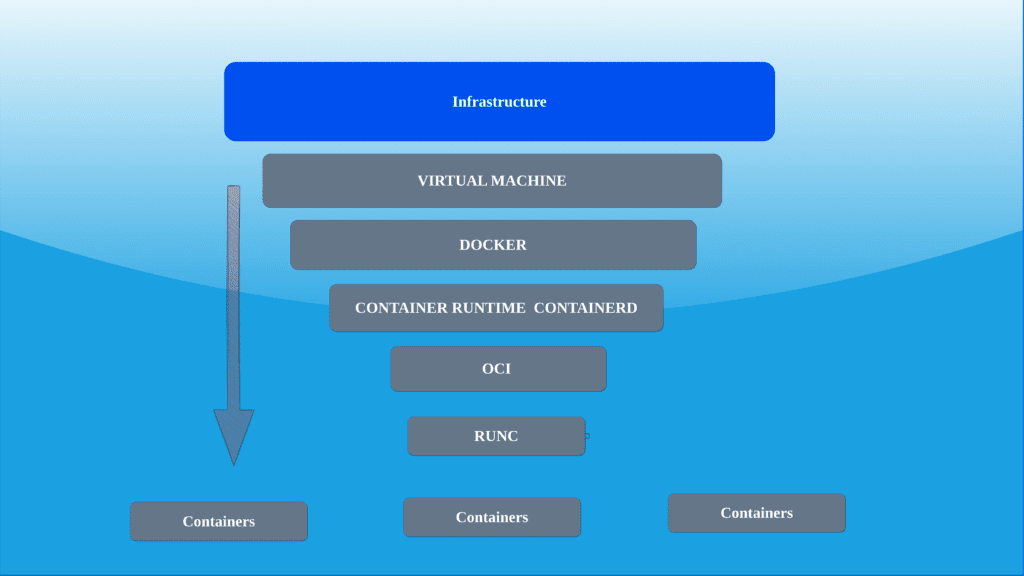
- Docker Engine: The Docker Engine is the core component responsible for building, running, and managing Docker containers. It includes the Docker daemon, REST API, and command-line interface (CLI). The Docker CLI allows users to interact with the Docker daemon and manage containers and images.
- Containerd: Containerd is an industry-standard container runtime that manages the lifecycle of containers. Docker Engine uses Containerd as its container runtime. Containerd provides functionality for container execution, image transfer, and storage management. It adheres to the OCI (Open Container Initiative) standards, making it compatible with other container runtimes and tools.
https://github.com/containerd/containerd - runc: Runc is a command-line tool for spawning and running containers according to the OCI specification. It is used by Containerd to create and execute containers based on OCI runtime specifications. Runc itself is a container runtime, and it operates as a low-level interface to the operating system’s capabilities for containerization.
https://github.com/opencontainers/runc - OCI (Open Container Initiative): The OCI is an open governance structure for the express purpose of creating open industry standards around container formats and runtimes. It defines specifications for container images and container runtimes, ensuring interoperability between different container tools and platforms.
Docker Engine is the core component responsible for building, running, and managing containers. It utilizes Containerd, an industry-standard container runtime, to handle container lifecycle tasks such as execution, image transfer, and storage management. Containerd, in turn, leverages runc, a command-line tool, to create and run containers based on the OCI specification. The OCI ensures that container formats and runtimes adhere to open industry standards, promoting interoperability among various container tools and platforms.
Docker vs kubernetes
Docker, a popular containerization tool, exhibits limitations that frequently drive users toward Kubernetes for container orchestration. Docker primarily focuses on single-host container management, making it less suitable for complex, distributed applications spanning multiple hosts. Kubernetes excels in managing such applications with advanced clustering and orchestration features.
Docker’s native orchestration tool, Docker Swarm, is simpler and less scalable than Kubernetes, making it less suitable for large-scale deployments. Kubernetes offers dynamic scaling, rolling updates, and advanced service discovery, enhancing its appeal for production environments.
Service discovery in Docker relies on manual configurations or external tools, while Kubernetes includes built-in solutions for service management and load balancing. Kubernetes also provides finer control over resources, auto-scaling, and resource quotas, which Docker’s resource management features lack.
Additionally, Kubernetes boasts a more extensive ecosystem, a larger community, and vendor-neutrality compared to Docker, which may have stronger ties to specific vendors. While Kubernetes may be more complex to set up, Docker’s simplicity is advantageous for rapid development. As a result, many organizations combine Docker for containerization with Kubernetes for orchestration, achieving a balance between developer-friendly deployment and robust production management.
Docker still has importance in today’s world and it stands out from other containerization tools due to its simplicity t and ease of use also the concept of docker and containerization is also helpful to deploy and run applications in Kubernetes cluster.
There are also other components in docker like docker volume, docker networking, docker images etc which I have covered in my other articles please check on those.
Summary:
We have covered the evolution of docker and its importance in today’s world in this article. We have created various articles on docker for more understanding of the concepts deeply have a look at those.

